How To Design Experiences That Help People Learn W/ Julie Dirksen


Click here for more details on how you can win a free ticket to attend the Genius Network annual event – valued at $10,000.
Greetings, SuperFriends!
Today we are joined by Julie Dirksen. Julie is a learning strategist and an instructional designer, who focuses on the science of sustainable behavior change.
The truth is, though, Ι was so fascinated by the learning how to learn aspect and the instructional design that we actually got to the end of the episode and realized we didn't even get into behavior change. So, we'll have to do a follow-up episode just on that.
Nevertheless, I think you folks are really going to enjoy this episode, as we go into what the things that help adults learn more effectively are, and which are the ways that we, as teachers and as learners, can structure our learning environments to be more successful.
I honestly believe you're going to enjoy the episode, as I really did. If you do, please let us know in the comments, and maybe leave us a review.
-Jonathan Levi
P.S. Do you dream of starting your own business on the internet to achieve financial freedom, empower tens of thousands of people, and one day…one day… find yourself in the company of other great entrepreneurs and thought leaders like Ray Kurzweil, Peter Diamandis, Joe Polish, Dean Graziosi, Russell Brunson, and more?
Well… What if that day was today?

Join Jonathan for a completely free, 1-hour training seminar, where you'll learn the top 3 strategies to accelerate your learning and improve your memory!

This episode is brought to you by Organifi. Save 20% on their highly-recommended green juice products with coupon code “superhuman.”
In this episode, we discuss:
- Who is Julie Dirksen, and what does she do? [6:30]
- How structuring a learning experience can make a huge difference in the experience [7:30]
- What makes a learning experience fruitful? [9:00]
- The importance of autonomy and involvement in adult learning [11:05]
- Who is the “smartest” person in an online learning environment? [12:30]
- What can you do from the student side? [14:00]
- Current limitations for mass interaction with students [17:00]
- How can we scale the teaching process, while maintaining the value proposition? [18:00]
- How does having a human teach you impact your learning? [19:15]
- Scalability through peer to peer feedback and teaching delegation [21:15]
- Active learning (and teaching) experiences [23:30]
- Challenges that Julie Dirksen faces in teaching others instructional design [24:40]
- The techniques to identify the learning and teaching challenge you are dealing with [25:30]
- Expertise (and examples) enables a lot of pattern recognition [28:00]
- What can you do when there isn't a right answer? [30:40]
- What can you do when the disaster hits? [32:10]
- Simple problems shouldn't be made complex [33:00]
- Complex environments need feedback mechanisms[34:30]
- Rockstar results – the correct way to teach math [34:55]
- Why do social interactions matter? [37:45]
- Who is Julie Dirksen's book for? [39:50]
- Where can you find out more about Julie Dirksen? [42:55]
Resources Mentioned in This Episode:
- Branding You by Jonathan Levi and Anthony Metivier
- Malcolm Knowles's Adult Andragogy
- Make It Stick by Peter C. Brown
- Our previous episode on Richard Feynman and the Feynman technique
- The Cynefin framework by Dave Snowden
-
Peak: Secrets from the New Science of Expertise by K. Anders Ericsson
- Dan Meyer
-
Design for How People Learn by Julie Dirksen and its Facebook group
- Julie Dirksen's website usablelearning.com
- designbetterlearning.com by Julie Dirksen
Favorite Quotes from Julie Dirksen:
Transcript:
Introduction: Welcome to the Becoming Superhuman Podcast, where we interview extraordinary people to bring you the skills and strategies to overcome the impossible. And now here's your host, Jonathan Levi.
Jonathan Levi: Before we dive into today's episode, I want to let you guys know about an opportunity to learn some of the most important skills in life, if not the most important skills, and those are the skills of learning and doing so rapidly, effectively and easily. You see guys, I'm putting on a completely free 60-minute webinar that you guys can check out where I will be going into my absolute best memory tips, learning tips, and speed reading tips so that you can immediately begin applying them and accelerating your learning of anything and everything. All you need to do to claim your spot in this free webinar is visit JLe.vi/webinar, we have showings at many different times throughout the days for every time zone, but you have to log in and claim your spot. So that's JLe.vi/webinar and I really look forward to seeing what you guys achieve.
This episode is brought to you by Organifi. You guys one of the only things that every nutritional expert that we've had on the show seems to actually agree on is that we all need to eat more vegetables, eat more greens, eat organic, cut out all the processed junk. Well, who has the time, right? Who has the time to go out, do the shopping, make the salads, make the juices, make the smoothies and that's what I love so much about Organifi? Their product is an all-organic green juice. It has all of the nutrients that you need. It tastes absolutely amazing and it's made by wonderful people who I consider to be personal friends and as listeners of this show, you guys can actually save 20% on your first order. All you have to do is go to organifi.com. That's O R G A N I F I.com and use the coupon code superhuman at checkout.
Greeting, SuperFriends, and welcome to this week's episode, which is brought to you, thanks to a wonderful, very deeply moving review by Aluka Sarone from the United States of America who says with a five-star review.
“Wow, just, wow. I just finished binge-listening to every single episode over the last few months safe to say I am a totally new person. Not only has this podcast helped to pull me out of a depression, it has excelled my commitment to excellence, provided a touchpoint for my thirst, for endless amounts of learning and knowledge, and thoroughly renewed my passion to live and thrive…”
It's quite a long review. So I'm going to skim down to the bottom and say, I have a big smile on my face as I'm finally able to indulge in writing your review after having ignored, your enticing offers several hundred times at least. Wow. Thank you so much for this incredible review.
I just blasted this out to our entire team and we all did a high five. We were so appreciative of this review and also really, really humbled to have been a part of your journey and to know that we had a positive impact on your life. So. Wow. Just, wow, indeed, and for any of you who have not let not get left a review, please do I'm all emotional over that one.
On to today's episode today, we are joined by Julie Dirksen.
She is a learning strategist and an instructional designer who focuses on the science of sustainable behavior change. The truth is though, I was so fascinated by the learning, how to learn aspect, and the instructional design that we actually got to the end of the episode and realized we didn't even get into behavior change.
So we'll need to do a follow-up episode just on that but I think you guys are really going to enjoy this episode because we go into, what are the things that help adults learn more effectively? And how are the ways that? We as teachers and as learners can structure our learning environments to be more successful. I think you guys are really going to enjoy the episode. I really enjoyed it. And so I will not wait, make you wait any further to get to it.
Ladies and gents, my new SuperFriend, Julie Dirksen.
Oh, wait, one more super important thing. Before we get into the episode, how would you like to hang out with me, Ray Kurzweil, Peter Diamandis, Joe Polish, Sean Stephenson, JP Sears, and about 400 of the top caliber entrepreneurs and thought leaders, including about a dozen or more past guests from the show. Well, it sounds pretty cool, right? Well, I am hosting a competition from now until the end of August 2018 to become the official brand ambassador for my new venture branding U Academy.
You see the winner will not only get tons and tons of exposure and mentorship from me personally, they'll also get a free ticket to attend the invite-only Genius Network annual event and meet 400 of the world's top entrepreneurs. Now, these tickets sell for $10,000 each and that's if you can get an invite and of course the learning and the connections that you will gain once you're in that room can easily amount to a hundred thousand dollars or more. So to learn about this competition and to read the rules and regulations and find out how you can win, simply visit JLe.vi/giveaway before August 31st, 2018. Okay, now on with the episode,
Julie Dirksen, welcome to the show, my friend. How are you?
Julie Dirksen: I'm great. Thank you.
Jonathan Levi: I am really, really excited to speak because as I understand that you and I both geek out about learning and learning how to learn. So I've really been looking forward to this call.
Julie Dirksen: Oh, fantastic. Yeah. Nerdy shop talks about that is pretty much my favorite thing.
Jonathan Levi: Awesome. So for those who didn't get a chance to internet stalk you before the call, give us a little bit of background on who you are and what you do.
Julie Dirksen: I am an instructional designer, which means that I design learning experiences for different things. Mostly adult workplace is my audience, I don't do anything with children and I sometimes do a little bit of work in higher education, college-level courses, but mostly I deal with training programs for adults and it can be pretty much any subject matter. I've kind of run the gamut over the years, but basically, a lot of people wind up teaching things because they know a lot about their subject, but they don't necessarily know how to communicate it to other people or how to turn it into a good learning experience and that's what I do is I get involved at that point and help them figure out how do they translate all of this knowledge that they have into good learning experiences for people who are usually new to the field or new to the subject.
Jonathan Levi: I love this and one of the reasons I'm so passionate about this is because I've recently started with another memory and learning teacher online, a business where we help people who have the knowledge, create online courses and teach.
And one of the things that I always emphasize to people is that anyone can learn anything online for free. What makes a successful online learning experience is putting in that time and that effort to develop a very, very specific learning journey and actually design the process by which students learn. I think that's why people buy online courses instead of just watching YouTube videos.
Julie Dirksen: Right. Right. And a lot of people learn a lot of stuff for just watching YouTube videos. But when we're going to sort of put down money and kind of invest in something, we want a better experience than that and the example that I usually use to explain it to people is everybody's familiar when they were in school or something with the course where one teacher teaches this is, you know, version of statistics. So it's fine. It's okay, it's not great and then somebody else with the exact same textbook in curriculum has an amazing class on statistics.
Jonathan Levi: Right.
Julie Dirksen: And what's the difference between those two situations what's happening in the one experience that isn't happening in the other experience and that's the sort of thing that we hope to get to with instructional design is, you know, kind of helping people get closer to that amazing experience.
Jonathan Levi: I love that. I love that. So give us a little bit of an overview. I mean, I'm going to intentionally bite my tongue because I geek out on this as well and you can't talk and listen at the same time, but what are the things that do make those learning experiences more fruitful for learners?
Julie Dirksen: Yeah. Well, you know, one of the challenges, when you become an expert at something, is it's really difficult to remember how to go back and think about what it was like to not know any of this stuff because one of the things that happen when we learn things is we automate a lot of stuff. It becomes kind of tacit knowledge where we, you know, we know it, but we're not really conscious of knowing it and it's really pretty difficult to put yourself back into the position of not knowing it.
Jonathan Levi: Totally.
Julie Dirksen: So there's a couple of ways that usually I'm helpful around that and one is a frequently I'm coming in from the point of view of not knowing that much about their content uh, sometimes I do, but mostly I don't. So I can sort of be a little bit of a proxy for the person who is genuinely new to the material and kind of ask the questions and clarification, but then the other part of it is really encouraging people who are creating this material to involve their end-users or their learners in the process, either through user testing or through some kind of feedback mechanism or some kind of observational pilot or things like that because, by the time I've gone through the design process with a, an expert, I get tainted too.
I mean, now I start to take on not a full-blown expert viewpoint, but um, bought a little bit more into the extra viewpoint and so one of the really crucial things that I spend a lot of my time doing is convincing people, especially with online learning kinds of stuff to do, to do good user testing and to make sure that they've got a good feedback loop built into their processes, that they can see what's going on with their learners and kind of adjust as they go.
Jonathan Levi: I love that. I love that and I'm sure you also geek out on the Malcolm Knowles adult andragogy and just this whole idea of how adults learn so differently and it's that it's adults need to be involved in the learning process in designing the learning process and they need to feel that the environment is one that respects their experience because they come to the table, so to speak the learning table with way more experience than children. And they're ready to say, Hey, you know, you need to involve me. I already know some things and I want you to respect that and respect my feedback.
Julie Dirksen: Yeah, absolutely. Well, and you know, we know that autonomy is a big motivator for people.
People like to feel like they'll have some kind of control over the situation and so treating adult learners like their children and actually children like their children in that sense too. I mean, children can participate in their own learning as well. You know, kids are natural learners, and then we kind of beat it out of people by the time they're adults, where we no longer let people have a lot of control in some of these environments.
And the worst cases of it are things like compliance courses and stuff that I deal with all the time where there's so much, you know, and honestly, the problem with compliance courses is that it's usually about legal defensibility and not actually about really learning a certain point, but they're the sort of worst example of taking all the autonomy away from the users that several states in the US have a legal requirement over things like sexual harassment training.
So for example, if you're a manager in the state of California, you have to have two hours of sexual harassment training every year and so it turns into this game of how are we sure that somebody spending two hours in this environment, which is absolutely not purposeful in any way towards the learning experience, it's all about meeting kind of a, a legal requirement. So that's the far end of taking all the autonomy away from the users. Mostly I'm not dealing with stuff quite that extreme.
Jonathan Levi: Sure.
Julie Dirksen: Like giving people some control and letting people have the ability to drive in the environments. One of the things with online learning that we were supposed to have by now, you know, along with flying cars was, um, really adaptive learning environments.
So things that would cause that was one of the early promises with e-learning back in the sixties and seventies when they were first starting to kind of experiment with it, they really, with computer-based learning, they really wanted to have this adaptive environment that would give the user exactly what they needed and, you know, we're decades into this now, and that doesn't really exist.
But often in an online learning environment, the smartest person, when there isn't a skilled facilitator kind of guiding the process, the smartest person in the system at that point is still the learner. So giving the learner some control about decisions, about what they want to look at next, or how much more help do they need with something or anything like that is often a really important part of making sure that that experience is useful and not frustrating. So.
Jonathan Levi: I really liked that. Now on the topic of frustration, I did want to ask you, I think a lot of people in our audience share our passion, yours and mine for learning, but their experience of learning is as the learner and I'm wondering what we can share with them, what applicable tips we can give them for enhancing their learning experience as the learner because sometimes we come into an educational environment that maybe has not been optimized and are there things that people can do? Are there questions they can ask pieces of feedback that they can give to help improve the learning environment from the student chair?
Julie Dirksen: Yeah, and exactly what the best actions would be, would sort of depend on what the circumstances are that they're dealing with but a lot of time being a little bit more conscious about their own metacognition can be a really useful thing and some ways of sort of checking your understanding and then acting on that can be really useful. There's some nice research it's Korpeki and some people behind the Make it Stick book. Have done a lot of-
Jonathan Levi: Peter C. Brown.
Julie Dirksen: Yeah, have done a lot of interesting research on recall testing as a study method. So you basically test, you know, have these, you can sort of setting up situations where you sort of test your own knowledge on things and identify where your gaps are because we tend to be more confident about what we know, you know? So putting yourself into positions where you can see, all right, how solid am I on this particular thing? You know, one of the things that I've certainly found whenever I'm writing an article or a book or presentation is you're like, wow. I thought I knew that topic really well and now that I actually have to write something, that's going to get distributed to a bunch of people.
I'm actually realizing I'm a little less confident of my knowledge of that particular topic or that particular study and I need to go back and level myself up a little bit before I'm prepared to you know, put myself on the record in terms of, of teaching you to other people. So I think that that's a nice kind of metacognitive strategies, figuring out ways to sort of, yeah.
Yeah. You kind of think, you know it, but can you sort of really check your knowledge and go, oh, okay, here's where the holes are. Let me, let me kind of figure out how to address a few of those holes before I kind of move on to the next level and constructing some interesting goals for use as you're learning something like how can I test this out in my own environment or apply it? I think can be a really nice strategy to the whole notion of you know, kind of being able to observe your source sort of leveling up is a really good one and so sometimes if the learning experience hasn't done it for you, you know, in the best possible worlds, they would create some really interesting challenges for you to apply what you're learning.
But in the absence of that, can you do that for yourself?
Jonathan Levi: Wow. I really, really love this. This is all making me want to put you through our course and just tear it apart and tell us that it was all the things that we could be doing better. We did just hire a phenomenal head of customer experience who's done so much to come in as a student, as you said.
And I think this is one of the most important things about that role is as you, so adeptly pointed out is someone who doesn't know the material, as well as I do going through and being like, hey, how come, you don't have this? And it's like, ah, right, right. That would be helpful if I were learning this instead of teaching it.
But, um, you know, there's always so much room for improvement and especially in the online learning space, where, as you said, we've been promised so much in adaptable learning environments and it's like, all right, now we've got a PDF for you, right?
Julie Dirksen: Right. Right. Exactly and there are better and worse PDFs for those things.
Jonathan Levi: Yeah.
Julie Dirksen: But there's still a lot of limitation in terms of interaction and so forth. Um, one of the things that I believe about almost all of the online learning technology is that the technology itself tends to be built on this idea that the fundamental unit of learning is a piece of information and so it's all, I mean, the the basic item that they're dealing with is usually some chunk of information, whether it's video or whether it's some text-based or something like that, well really, you should have constructed all of our educational technology around the idea that the sort of the fundamental unit of learning is a learner action with feedback and I think we'd be dealing with very different kind of technology and affordances if we kind of came at it with that view. So the learner, try something, get some feedback on it and then kind of moves on because that's really in our, you know, in the real world, that's really kind of that fundamental unit of learning.
Like, oh, I need to try this, this strategy, I'm going to try it out. Uh, it didn't work quite like the way I thought it was going to, so now I'm gonna, you know, try it again, but adjust my, adjust, my approach to it.
Jonathan Levi: This is such an interesting topic to me because one of the things I'm most passionate about is using technology to scale intimate interaction.
And I don't mean intimate as in sexting. I mean, intimate interaction as in, can I write an email once and use technology to send that email from my email address, you know, in an automated way. So I don't have to actually be on and say, hey, Julie, thanks so much for completing the first lecture. My system's just alerted to me. I'm really excited. I'm hoping that you're feeling this, that and the other, and you know, how can I impact hundreds of thousands of lives using technology, not as a tool for mass communication, but for personalized communication, I find it so interesting that line between in authentic, automation of the experience of teaching another human being, which I believe to be one of the most kind and important acts of compassion that you can bestow on another human being is to teach them something, to add something to their experience in life.
But where's that line between being a jerk who automates a bunch of emails and utilizing that technology to actually make an impact on the student's learning experience?
Julie Dirksen: Yeah, it's a really interesting problem and one of, kind of our persistent challenges in online learning is that scalability, because we know there's some super interesting research that was done kind of the early, mid two thousand at the MIT media lab, they did a study where they would put people into these learning environments as a virtual reality kind of thing, where they were working with an avatar who was teaching them some material.
And half of the audience believed that the avatar was a real person speaking to them and the other half knew that it was the computer. In both cases, it actually was the computer. It was a scripted interaction, but the people who believe they were interacting with a real person, recalled more information, showed paid more attention, did better on the post-test retain stuff longer.
So even the belief that you're sort of interacting with a real person can have a positive benefit. On the learning experience for people and, you know, one of the things that I'm always interested in, I get asked a lot about how do you create more engaging learning experiences? And there are all these cues in the world that tell you something's important that they should pay attention to it.
And that personal piece is a really big powerful one of those cues, that social connection and all of those sorts of things. So as we scale-out, how do we not lose that and clearly you can have people feeling a real connection in a one to many environments, you know, uh, beloved authors do it all the time or musicians or, you know, things like that, where they're one person with an audience of millions of people, but those people will feel connected to that person.
And obviously, it's not an equal connection. I mean, the author is not equally, or the musician is not equally connected to all of those people, but they still feel a personal, a personal connection to it. And so that kind of thing can be really powerful in a learning experience but yeah, it's a tough problem because the authenticity piece is a huge part of it. If it feels like I'm being manipulated or if it feels like you genuinely aren't talking to me or you're just, you know, marketing something or whatever then yeah. It's not going to be effective.
Jonathan Levi: Exactly.
Julie Dirksen: With the MOOCs stuff. They looked at things like if I can't scale feedback in a window mini-environment.
So if somebody is teaching a book with thousands of people, of course, they can't give individual assignment feedback. It's just. Literally not possible, but they looked at things like peer-to-peer feedback and so forth. And that was kind of the most interesting thing that came out of the Moog stuff was some of the mechanisms around things like peer-to-peer feedback, which turned out to have value going both ways.
So the person getting the feedback got some value from it, but the action of giving somebody else feedback turned out to be a really good learning experience for those people.
Jonathan Levi: Yes. The Fineman technique. I mean, if you have to simplify something enough to teach it, you're going to learn a lot. You know, everything you said made me think of two different things.
One is that we've had exactly that experience that creating a lively Facebook community around our program has actually reinforced the experience so much. But one thing that we want to do, and I was just talking with our support staff is I want to spend time. Essentially certifying our support staff so that they're doing more than telling people where to download the resources and, and helping people who need to change their credit card on file, but actually are certified to give the answers that I would give or even better answers that I would give on.
You know, here's how you should be training. And if you're encountering this problem as a super learner student, I think that's one of the things is. Is creating a ripple effect, right? And university professors have done this for a century having a TA or a teaching assistant who understands the material as well as the professor.
And then just scaling in that way. Right. Utilizing. Essentially middle managers, right. To utilize that interaction in, in a more scalable way. I think that's really interesting. The second thing is actually just this morning, I had a conversation with a startup company here in Israel called Juul, and they believe they're exploring this in-person thing and they're doing a kind of.
Campus where the learning is combined with online learning and in-person learning and you go, and you have class discussions, but parts of the video or live broadcast. So we're potentially looking at doing a pilot where we compare people, watching a video of me versus me actually going into their campus on Rockfield Boulevard.
And we want to actually measure how much more effective and successful are the students that I actually see face to face.
Julie Dirksen: And there's some interesting mechanisms system, some stuff that I think mostly gets used at the high school, higher ed level about kind of, team-based learning for multiple-choice questions.
So you start with a multiple-choice question, but then you have to negotiate your answer as a team, and then you find out if you're right or wrong. And if you're not right, then you kind of go to the next likely answer. But it's essentially using a multiple-choice question, but it's a very active process for a group.
To discuss and negotiate what their answer is going to be to a particular question. And so that's a case where the mechanism that got set up front is fairly simple, but the actual interaction around it, because the team is, you know, discussing and debating and things like that creates a much more sort of interesting learning experience for that audience.
Jonathan Levi: Amazing. So I want to ask you, Julia. I would be remiss if I didn't ask you and it's okay if you don't want to share, but I would love to hear some names of. Companies organizations, online course providers who are doing a really, really good job in your perspective of engaging learners and designing learning environments.
And then this is the part that might be controversial. I'd also love to hear some that you think are not doing a very good job.
Julie Dirksen: The issue for a lot of stuff. And I'll kind of back up and give you a little bit of the framework. One of the problems I'm working on right now is trying to what I spend a lot of my time doing is I've, you know, I've been an instructional designer for decades, and I know a lot about this stuff, but a lot of times people get to be good instructional designers.
Cause they just try a lot of things and sort of see what works and what doesn't work, which is great, but that's hard to teach to somebody new. And so. A lot of what I do is I'm trying to take what good learning design people do and turn it into, I wouldn't say rules, but, you know, give people some principles that can guide new practice in such a way that even if I'm not getting them a hundred percent there, can I get them in the neighborhood?
You know, can I get them 60 or 80% there and what are some kind of principles around it? And so one of the big issues, and I'm going to sort of not answer your question first, but it'll come back around to it. One of the big issues is knowing what kind of problem we're dealing with and the model that I've been liking lately for analyzing this is something and I'm going to probably pronounce this wrong, cause it's a Welsh word, but connection.
Are you familiar with this? It's Dave Snowden's
Jonathan Levi: That's New.
Julie Dirksen: To me model is he, is it for organizational development? And so he talks about how within organizations, you have different kinds of problems and there's simple, or I think actually the most recent version of the model call it obvious there's complicated, complex, and chaotic.
And then there's a disordered state that kind of sits in the middle, but simple problems are problems where we know the rules. They may not be simple in the sense of, they may have lots and lots and lots of moving parts, but we know exactly what. We want to have happened. We figured out what all the rules are.
So daily plant operations in a nuclear power plant facility would meet the definition of simple, even though it's obviously, you know, an enormous environment with, like I said, lots and lots of moving pieces, but we know exactly what we want to have happen on a normal day. We have exactly the specific rules.
Spelled out, um, and simple works really well in things like online learning environments, because you know, all the rules and you can ask multiple choice questions and have right answers for it and all of these kinds of things. And so that's an, an environment where a lot of. Current technology and things like that.
We were pretty well. I need you to do this exact thing. I know exactly what it is. I know what performance looks like. And we've defined that typically pretty clearly in areas where safety, health, and safety are kind of a big deal. So a lot of health care has very clear rule sets and procedures. Airplane safety has real sets and procedures.
Things like a nuclear power plant has really defined rules and procedures. But then when we move into. Complicated. That's where there's probably rules, but we don't necessarily have them all explicitly defined. So when I sit down with a client and they start telling me their problems, because I have decades of experience, I immediately start kind of reading through like a little mental decision tree.
Okay. You told me these things, I'm going to abandon these three things, but I'm going to ask some more questions about these things and I'm eventually going to tick my way through kind of a decision treated least. It gets us a starting place for how I'm going to start to engage with this client. And what kinds of things I think might start to be solutions are going to be good for them.
And if I really sat down one day and actually probably if I sat down one month, I could draw out that decision tree to a certain extent. I'd have to really think about it and road, test it and see where I'm missing stuff and things like that, but it exists. And that's where expertise tends to be. The most useful is in the complicated domain and way you learn that as you see a lot of patterns over time.
So you see patterns and patterns of patterns, patterns over time. And, um, If you're familiar with Anders, Ericsson stuff, the book peak, that's the kind of expertise that he's frequently talking about. So he was talking about creating a database of, uh, x-rays for radiologists. And I think they created a database of about 16,000 x-rays and then radiologists can read the x-ray test themselves, find out if they were right.
Go on to the next x-ray test themselves, find out if they were right and after thousands and thousands of repetitions, you get. You know, you really can level up your expertise it at reading x-rays, but it's through this sort of tacit pattern recognition. So anytime somebody says, well, you know what, when you see it, or you just know if it's a good one or things like that, that's something where complicated and repeated exposure to examples is super helpful.
So. I was doing a curriculum audit for a company that does six Sigma. And one of the really important things when you're doing a six Sigma project, which is a process improvement project is to have a good why statement front? You know, why are you doing this? What is it for? What question are you essentially investigating?
And I said, okay, well, what are the criteria of a good why statement? They kind of gave me some stuff and I'm like, well, how do you know when you're done? Analyzing it and you have a good one and they just kind of looked at me and they were like, well, you just sorta know. And I'm like, okay, great. That is not hard to explain to new people at all, but it is something where then what that tells me about the learning experience is new people are going to have to see a lot of why statements and get good at judging.
Is this a good one or is this not a good one before? They'll start to develop their own internal sense of what's good why statement and what's not good why statement. And so. What I know from that is that we're going to have to find ways for people to get exposed to a lot of them as part of their learning experience.
So it's not like, Hey, we can show you one or two as examples, and you're going to be able to make those judgments yourself. No, they might need to see 30 or 40 and get, you know, so it might be like, Hey, every class might start with like, A little investigation of why statements before we jumped into some other content.
So that by the time you're done with the entire curriculum, you've seen a lot of these and you can start to make some of your own judgments about them. So simple, complicated. The next domain is complex. And the issue with that one is that's a domain where conditions are changing a lot. And so there isn't necessarily a right answer.
What we typically have in those environments is methods for investigating and bringing back data. So if you say this to a pricing expert, what should I charge for my product? They can't. Turn around and say, well, clearly $99, because what they'll say is, well here are some methods for starting to get data from your audience and to do product comparison and to investigate certain things because the right amount of money to charge for a product is going to change depending on conditions.
And it, the right answer today might actually change tomorrow because a competitor comes into the market or, you know, the economy changes or something. Is happening. And so what an expert in pricing will do is have a toolbox of methods of inquiry, rather than a set of patterns that there give them, an answer that they can just pull out of their heads.
And so complex changing conditions. The answer may change from day today. And so what we're doing there is teaching people, how do I investigate this and then respond to what I find out when I investigate it? And so the format. For learning in that instance would be much more of a workshop kind of thing, where I'm going to want you to practice using these methods of inquiry, bringing data back and telling me what you found out and how do I use it.
And then the last domain that he talks about is chaotic, which is. You know, what do you do on the ground after the earthquake hits? And one of the distinguishing factors of a chaotic environment is usually that you have to act before you have perfect information. And so some of the things from a learning point of view that are useful in a chaotic space are things like methods of triage.
How do I kind of act, but also start to try to get control of the situation and bring it back into one of these other domains? And also to a certain extent, emotional self-regulation. If I'm operating in a really high-stress environment, How do we help people have tools that allow them to kind of stay home so that they can continue to function and they don't get completely overwhelmed by it?
So depending on what your problem is, your approach to the learning design is going to be different. And your strategies for handling it. As, you know, as a learner practitioners are going to be different.
Jonathan Levi: Fascinating. I always tell people, you know, who I talk to who are creating online courses and they asked me, you know, what are some tips you can give?
I always say, you really need to consider the exact psychological state that the student is in at every single point. And when I say it, I mean, it, you know, I just learned about visual mnemonics. What am I feeling? Well, I'm feeling overwhelmed. So the next lecture needs to say, listen, we understand that this and so on and so forth, but I love that idea of think about the overall picture.
Of, you know, is this a chaotic environment, a complex environment? And design from the ground up for that. I think that's really.
Julie Dirksen: Yeah, because if we tend to have Mino solutions in our toolbox, especially in my world with instructional design, we tend to have a set of solutions, but when we misapply stuff.
So if I'm trying to force complex or complicated into the simple box, which happened full a lot, you wind up. Writing these totally ridiculous multiple-choice questions, which just aren't appropriate. And so the feedback mechanisms in each of these environments would be different. I can have computer-based feedback and simple, but if I try to do it in complicated, it doesn't work nearly as well.
And I can do scenario-based questions sort of, but really what I need to do is have somebody try stuff and get things like expert feedback from somebody, you know, and it could be the TA person as opposed to the instructor, but, but somebody is going to need to look at this who can do that? And recognition and say, here's where you're doing well, and here's what you need to adjust.
And then complex. I really need environments where people can try stuff out and try stuff out in a realistic sense, you know, like actually go do some exploration with our audience and bring results back and discuss them and things like that. So of course, so the feedback mechanisms need to be completely different depending on.
W where our initial issue is we're starting with.
Jonathan Levi: Right.
So, Julie, do you have any, and it's okay to say no. Do you have any standout rock stars that you think are doing just an incredible job?
Julie Dirksen: There's some interesting people in different domains. So somebody I really think is doing a nice job dealing with some of this complexity that we're talking about is, and it's heated stuff in math education.
There's a guy named Dan Meyer and he blogs at a website called Mr. meyer.com. But he's working on math curriculum. And I think largely for grade and high school students and things like that. But one of the things that he talks about when he's looking at math is he's like, okay, math textbooks are all, he doesn't use the, um, and language, but what he's essentially saying is that math textbooks teach math.
Like it's all, I'm given a structured problem and I have to solve it. And find the answer to it. And so you're always, that's how it works. You get a problem in the textbook and you have to solve it, but he says, and you look at how math gets used in the real world. What you start with is a messy ill-defined problem.
And then you have to even figure out what questions can I ask about this messy? It'll define things like how can I have a clear. The question that I'm trying to resolve, and then you figure out what data do I have, what data am I missing? What type of math can I apply to this situation? How do I construct the problem that needs to be solved?
And then how do I solve the problem? And so his argument is that. I don't know if that's seven or eight steps or whatever, but we're starting at the last step in most of our math education. And so what he does is he has what he calls the three-act structure, restarts with some kind of messy ill-defined problem.
And so he'll do stuff like he'll take a video camera and a big clear bucket with like measure markings on the side and you'll stick a garden hose in it. And it'll just film the bucket, getting filled up with water from the garden hose. And it's got a time marker on the, you know, the video time markers going.
And so then he'll be like, okay, what questions can we even ask about this? And he'll get the students to think about it. Well, you could ask, how quickly will the bucket be filled up or how much water is in the bucket, or what's the rate of flow, or like several different questions. Then they go through the whole process of going, okay, well, How would we collect data about that?
What data do we need to even have? How would we construct the math problem and then solving the math problem, which is going to have kind of a messy answer? And I love those math problems with really tidy answers, but that's not how most of those things work in the real world. So. I love that as an approach.
And he's got a company that's working on, you know, math curriculum, which tries to kind of put it into this context because that's the capability that those students are going to need to have when they go work for, you know, a massive tech company. And they're trying to apply these math skills is, you know, messy fields, structured problems that then they can kind of.
Build some structure around and things like that. I would say in terms of learning technology kinds of things, I feel like we're one of the big problems we have with most learning technology is that unless there's a real person giving you feedback on, on the other end, we're dealing with recognition based activities.
And so I need to recognize. The right answer from a list of right answers. And that is inherently a much lesser cognitive activity than being able to generate the answer yourself.
Jonathan Levi: Totally.
Julie Dirksen: So there's a couple of companies that have been doing some interesting stuff with online play and they use webcams.
So you can actually practice, you know, if you're a salesperson, you can actually practice talking. I think when it's called rehearsal and there's a few others. And so that's interesting. And then eventually that data will get sent to. A real person to give feedback and things like that, but people can do self-assessment before they get to the point where they, they send off their answer and they can decide, did I answer that well, no, I'm going to rerecord it.
And so anything where people have to generate the answer I'm liking right now, I feel like it's mostly kind of a disappointing set of. Here. We're just going to make it a little easier for you to get information and, you know, things like that. So social learning environments are great because there's a lot of stuff that's happening in the world where it's not totally practical for people to create kind of formal learning around it because things are changing too fast.
And so environments where people have social learning and the opportunity to talk to each other, Those are really great. Uh, I have a, I have a Facebook group around my book, which is called Designed for how people learn. And I've been loving that because not only is it a nice opportunity for me to answer people's questions, but then lots of people are able to see those answers.
So instead of me responding in an email to somebody, I encourage them to go post it in the group. And then when I answer the question, lots of other people can see that answer, but also theirs. All these super-smart people in the group answering instructional design questions. And they'll jump in and say things that, you know, I couldn't have told them.
So that's encouraging to me is the social learning environment. But otherwise, I think we're still struggling a bit with learning
technology.
Jonathan Levi: Totally. I totally agree with you now. I did want to ask, I know we're coming up on time here, but I wanted to ask. Who is your book for, I mean, tell us a little bit about design for how people learn and who this book is for.
Julie Dirksen: Yeah. You know, one of the things that happened when I was working on the outline for the book and so forth is I really felt like there wasn't a good first book for people getting started with learning design. Uh, so what. Typically happens in the world is, you know, something about your topic and maybe you've got a little bit of kind of talents around explaining it to other people.
And so somebody else wants you to then teach it to somebody else. I started describing it as the, Hey, you're a good customer service rep, or you're a good web developer, or you're a good whatever. We want you to teach customer service or web development to some other people. And so tons of domain knowledge, but not much background in teaching it to other people.
And what happens. Is, um, a lot of cargo cults. You mentioned Richard Fineman and he used to talk about cargo cult science.
Jonathan Levi: Right.
Julie Dirksen: And the issue is that, okay, I don't know how to teach this, but I've been in lots of classes. So I'll make it look like what the classes are in cargo cults, which apparently are a real thing.
I wasn't sure if it's apocryphal or not, but apparently, it's a real thing. there Were situations in world war II where like, Oh God, for example, the US Navy would go. Station itself, an Island in the Pacific, and they would build a plane airstrip and then stuff would come in and then they trade it with the local population for, you know, fresh food or something like that.
And the local populations in some cases said how well, that seems like a pretty good deal. And so they actually did this thing where they would build airstrips and then set the situation up and then they'd be like, why aren't the planes coming into the. Cargo cult idea is a metaphor for understanding what causes the planes to show up.
And there's a lot of cargo cult stuff that happens in learning. I have to teach this topic. I don't know how to do it. I'm going to make it look like a class that I had. That was a good class. But the stuff that I remember that was visible to me was things like the teacher standing at the front of the room and having a slide deck and explaining stuff.
Ye ah And that all the things that that teacher was doing, kind of that isn't quite as visible, like asking good questions or scaffolding, learning for environments or using examples or things like that. Those don't make it because they're not, I mean, even though you, those are the things that made the experience memorable that you don't have at your disposal, that sort of toolboxes readily.
Maybe you do, maybe you've picked it up automatically. But so what I was really trying to do with the book was give people some of the underlying principles of why the planes show up in learning environments so that they could make good decisions about learning design. And there were quite a few books that existed, but they all had a bit too academic, atone S So what I really was trying to do is. Do something that was conversational and genuinely accessible to somebody with no background at all in learning that would help them understand some of the underlying principles of what they were doing and give them some tools that they could then use in their own learning experiences.
Jonathan Levi: Phenomenal joy Julie I know we've now come up on time. So I want to ask you before we let you go, where can people reach out and learn more about what you're doing? Get in touch with you.
Julie Dirksen: Yeah. So my website is usablelearning.com I mentioned my Facebook group, which is its Facebook group that it's designed for how people learn, which is also the title of the book.
Love to have people in there who are interested in the topic. It's turning into a lovely place for the aforementioned nerdy Shoptalk.
Jonathan Levi: Great.
Julie Dirksen: And then I'm also going to have some courses up later this year on some instructional design basics, and that will be at design, betterlearning.com
Jonathan Levi: Great. And I want to encourage everyone to check out the show notes because we make it easy for them.
And we put all those links right in the show notes for people to enjoy at becomingasuperhuman.com or better yet superhuman.blog to make it really easy. Julia, I want to thank you again for your time and for sharing your, uh, I believe, as you said geeky, shop talk. I really enjoyed the conversation. I know our audience did as well.
Julie Dirksen: All right. Thank you so much.
Jonathan Levi: All right. Take care.
All right. SuperFriends That is all we have for you today, but I hope you guys really enjoyed the show and I hope you learned a ton of actionable information tips, advice that will help you go out there and overcome the impossible. If you've enjoyed the show, please take a moment to leave us a review on iTunes or Stitcher, or drop us a quick little note on the Twitter machine @gosuperhuman A Also, if you have any ideas. For anyone out there who you would love to see on the show. We always love to hear your recommendations. You can submit on our website, or you can just drop us an email and let us know that's all for today, guys. Thanks for tuning in.
Closing: Thanks for tuning in to the becoming superhuman podcast for more great skills and strategies, or for links to any of the resources mentioned in this episode, visit www.becomingasuperhuman.com/podcast.
We'll see you next time.
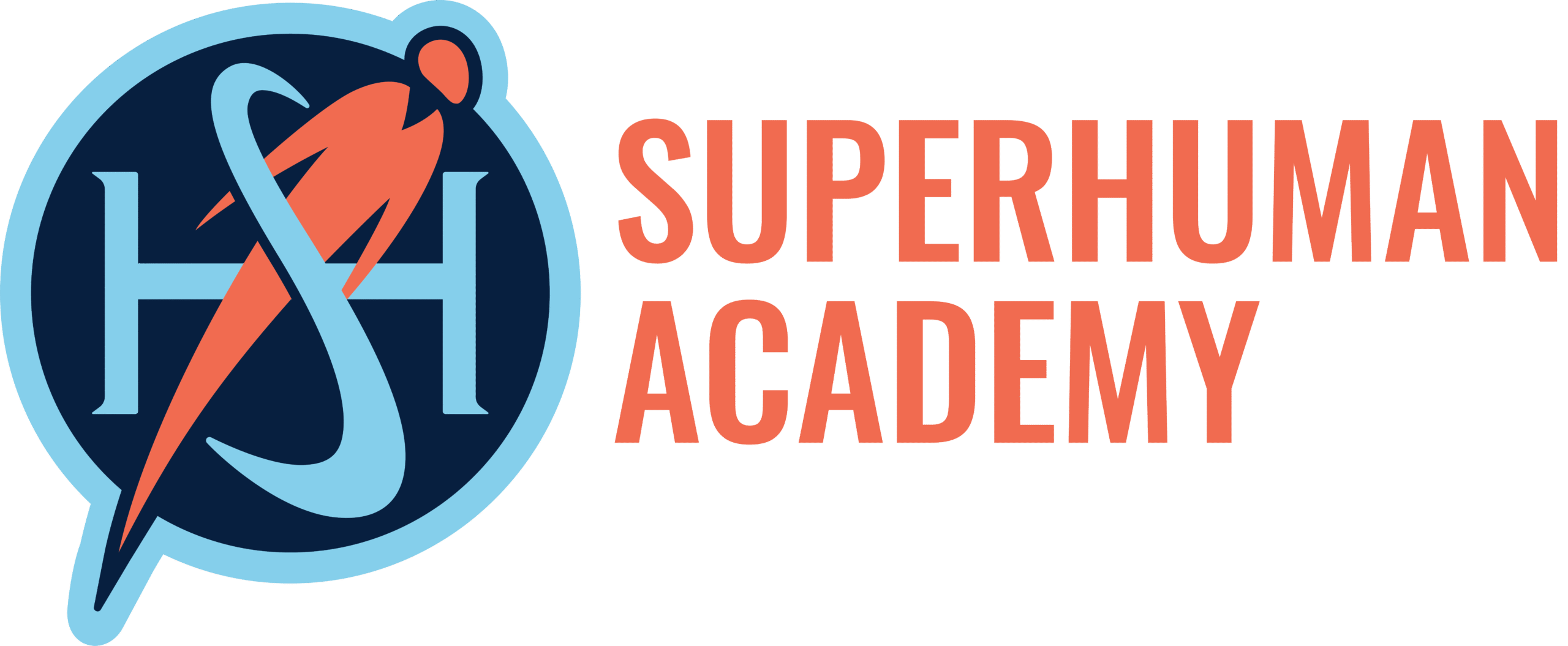
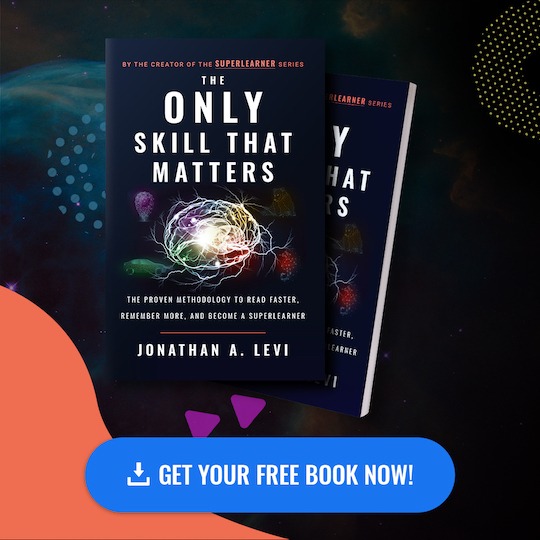




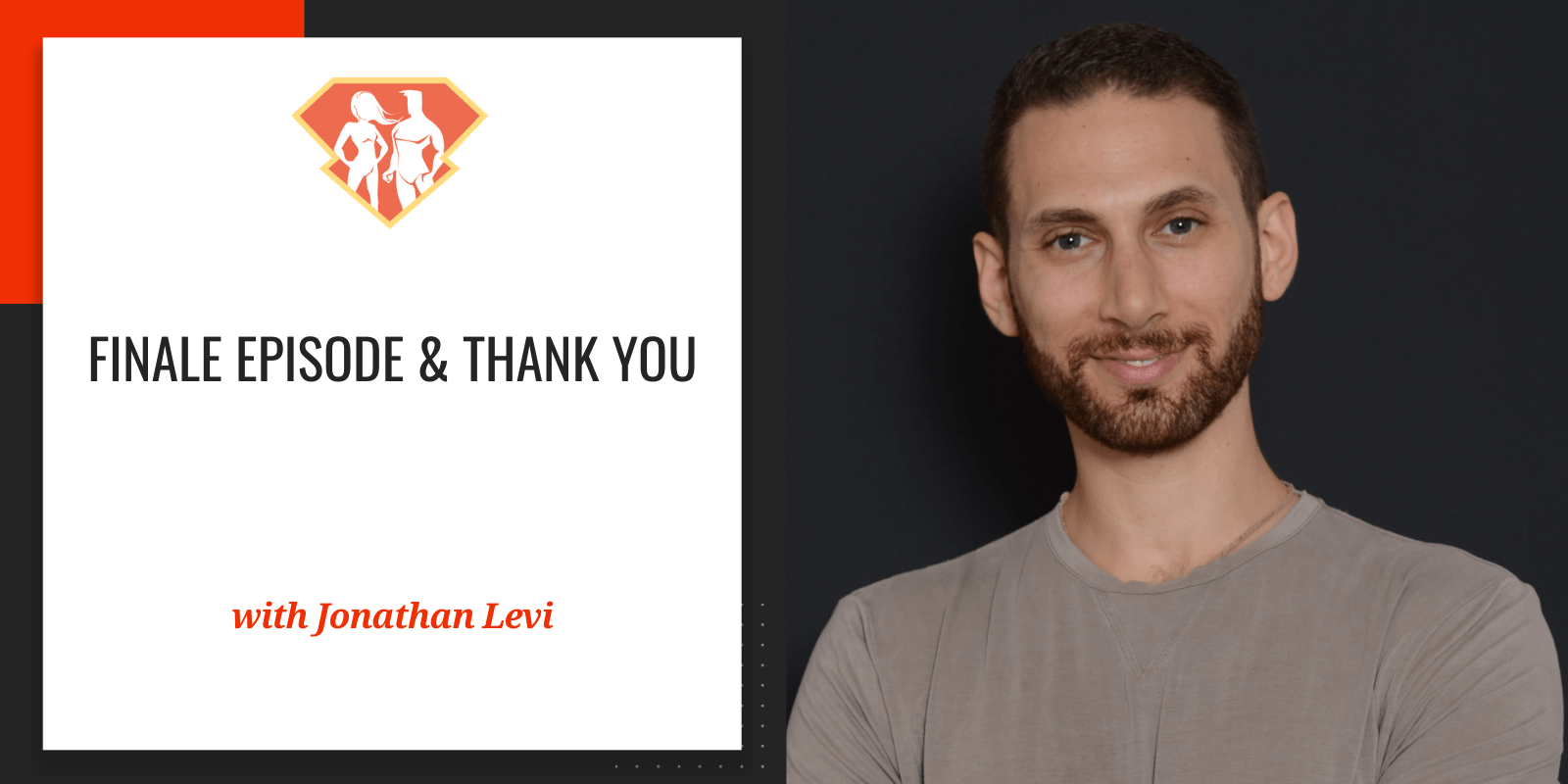

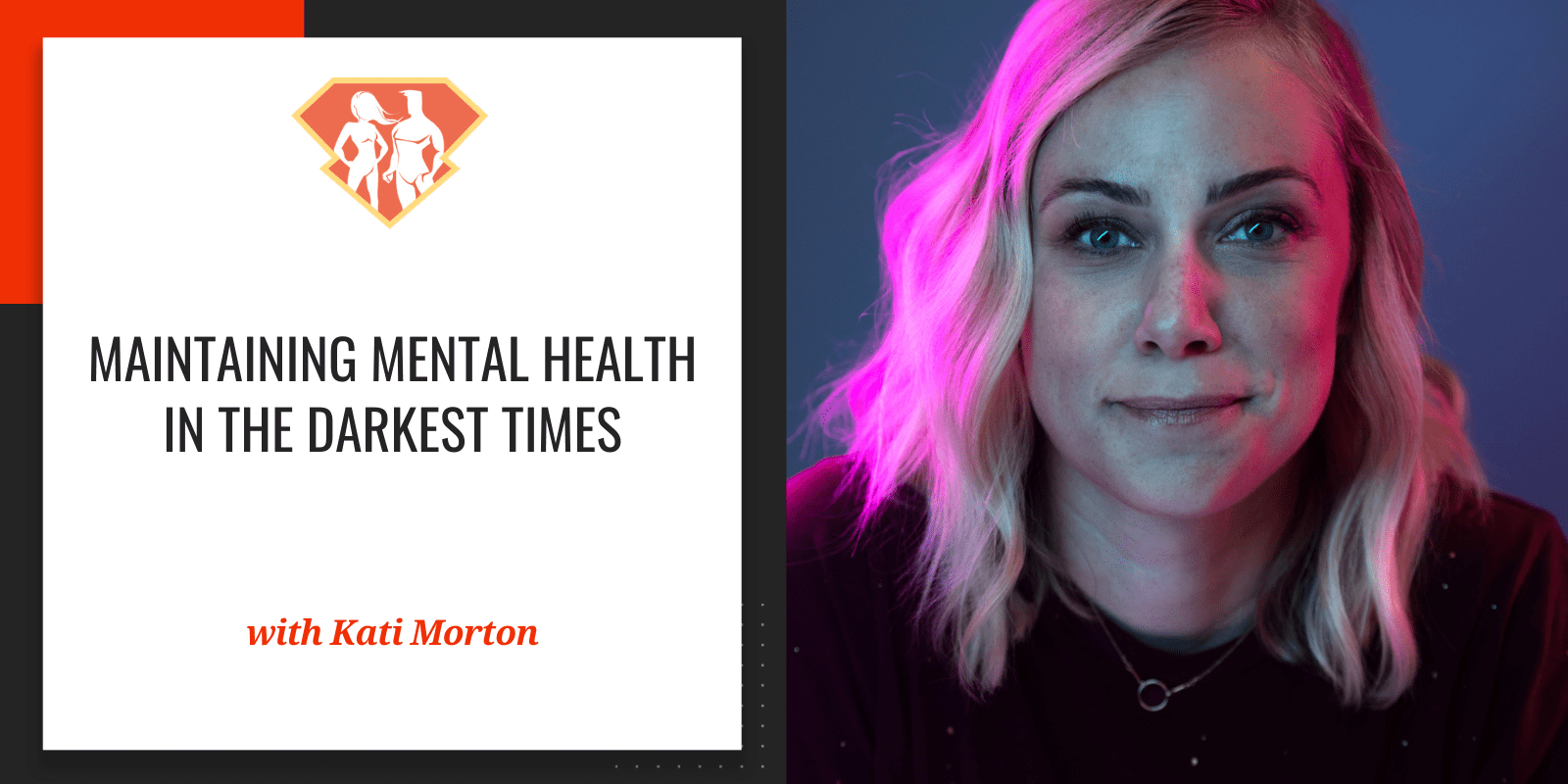



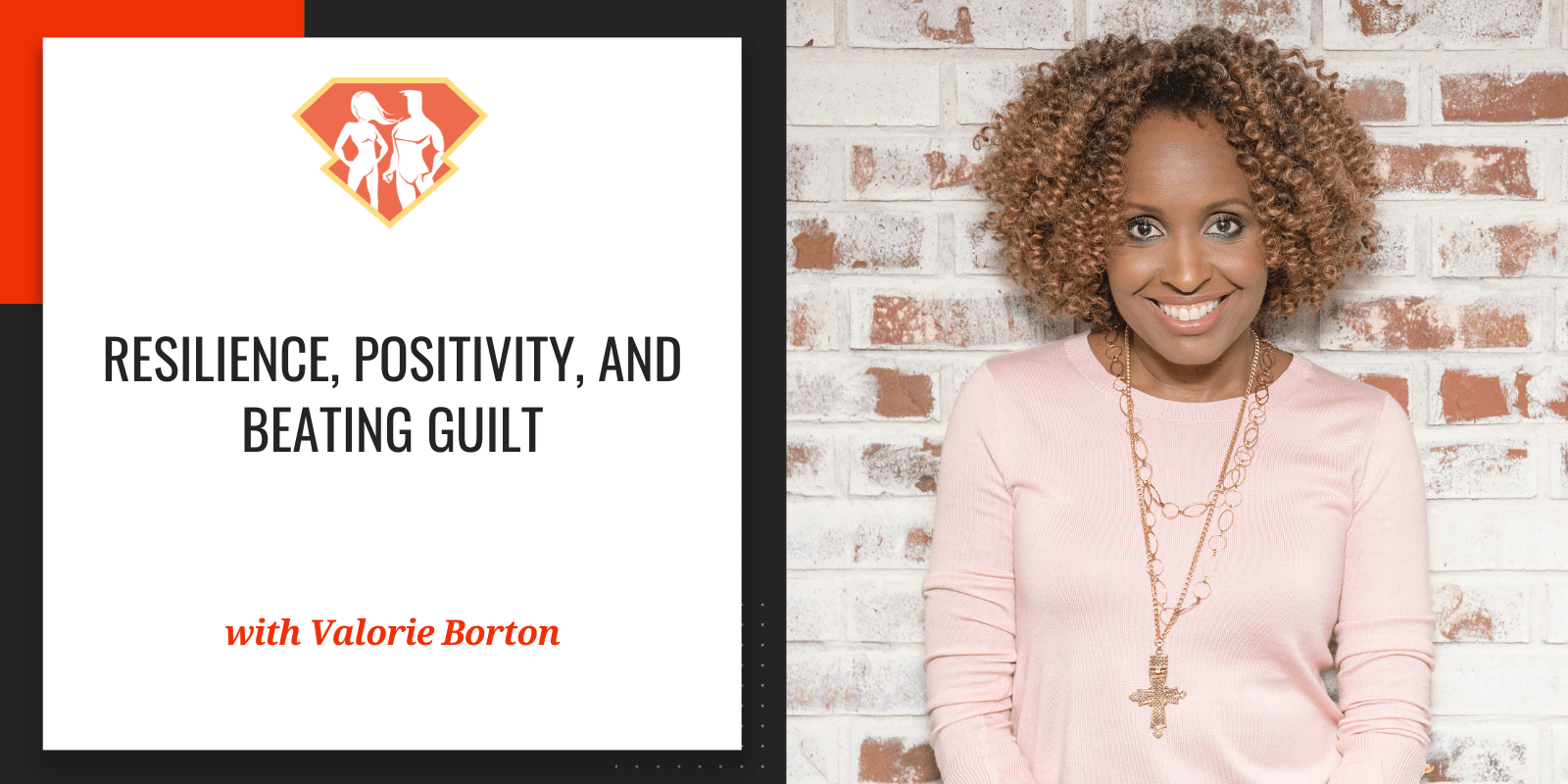
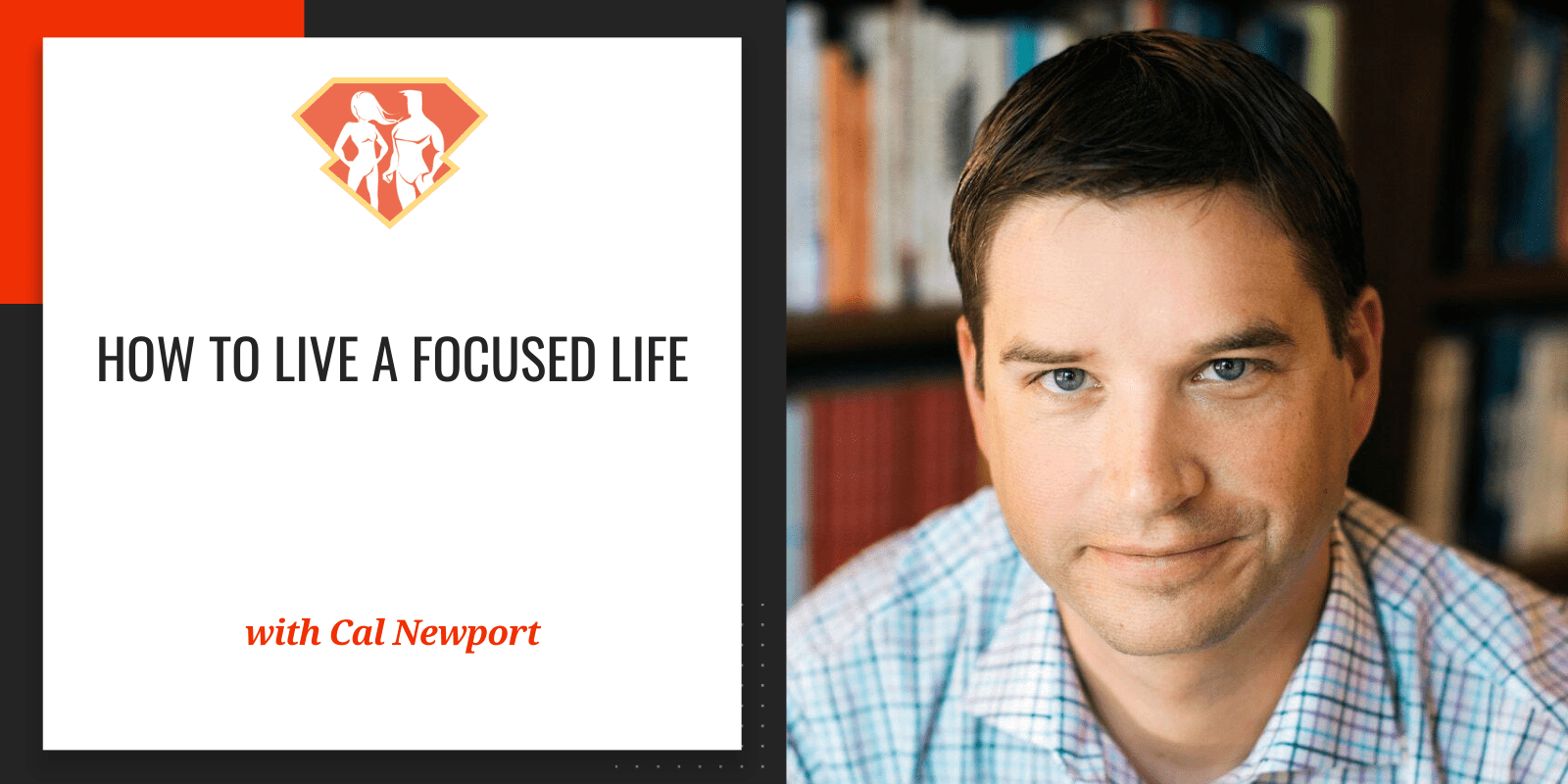

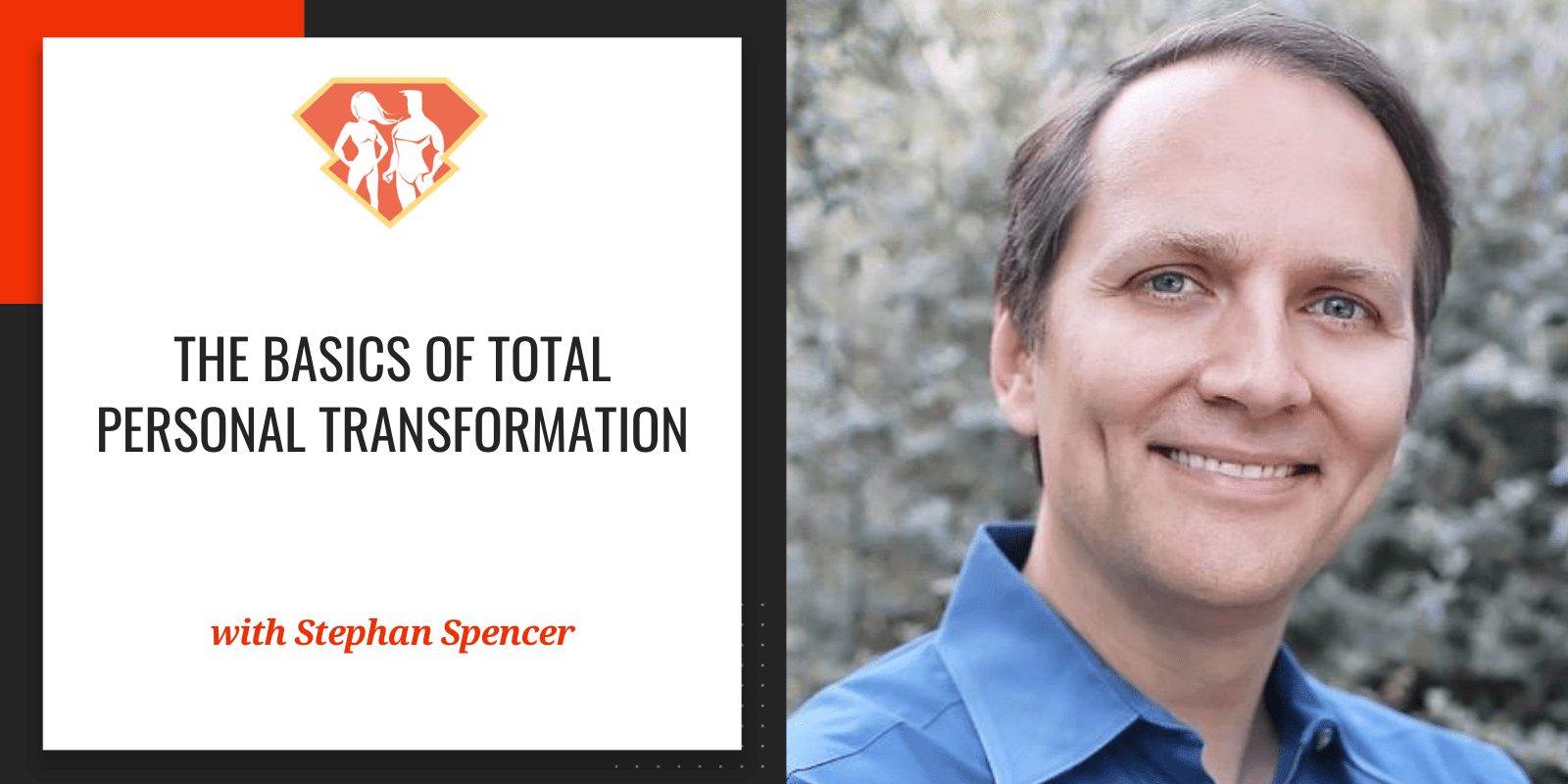
4 Comments
Thanks, I learned a lot of interesting things in past episodes.
loved th heart and the depth of the conversation. The way that Dr. Metivier shared from his enormous experience and insights was just amazing. Thank you Jonathan for doing this podcast!! 🙂
Great interview with Dr. Greg Wells! He mentioned a doctor from Colorado around the 42:30 point of the podcast, discussing turmeric and black pepper. I couldn’t make out the doctor’s name. Can you provide me with his full name and maybe his website or contact info. Interested in his products.
Thanks,
Rob
I am new here, and learning really fast.
Thank you.